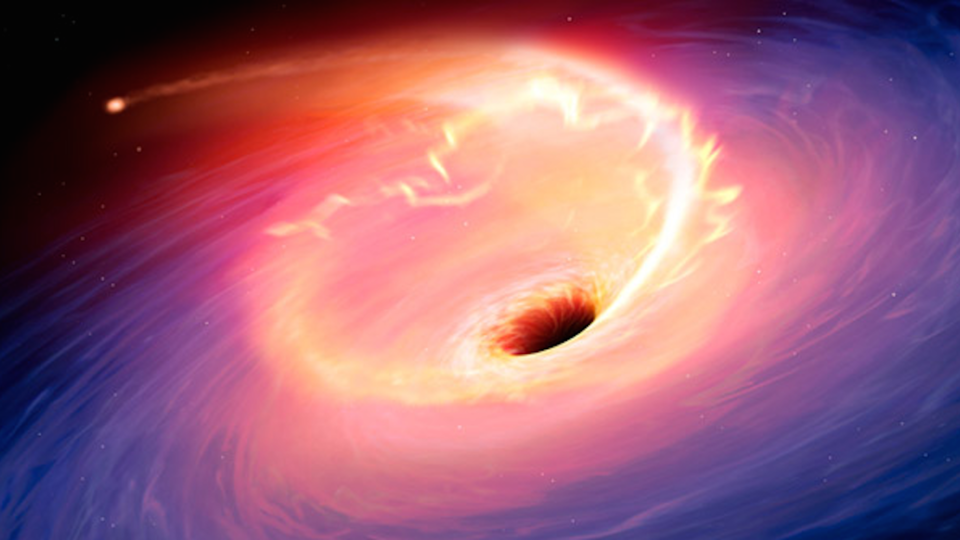Mapping the Heavens, Priyamvada Natarajan, Yale University
Monday, March 6th at 7:30 pm

The release of gravitational energy as the debris of the star is accreted by the black hole leads to a flare in the optical light of the galaxy.
A recent study conducted by astronomers at the University of Sheffield has shown that stars may be getting destroyed by supermassive black holes much more frequently than we used to think. Their observations, which were published this week in Nature Astronomy, showed an extremely bright event in an ultra-luminous infrared galaxy about 1.7 billion light-years away, called F01004-2237. If that name doesn’t get you excited, hopefully what they found in this galaxy will.
Astronomers have observed stars being affected by black holes in the past. These so-called tidal disruption events (TDEs) occur when a star comes close enough to a supermassive black hole that the gravity of the black hole can rip the star apart. In fact, what happens to these stars during such events, as they get stretched by the differential pull of gravity, is called spaghettification! (Every so often astronomers do come up with interesting names for things.) However, up until this point, it was thought that these events were very rare. It’s been estimated at a TDE only happens once every 10,000 to 100,000 years per galaxy, and they’ve only been observed while conducting surveys of thousands of galaxies.
So it was very unusual that this recent observation was during a survey of only fifteen galaxies. The astronomers at University of Sheffield looked at this small group of galaxies back in 2005. But then, in September 2015, they noticed a big change with F01004-2237. The spectra they received from this galaxy didn’t match what we would expect from a supernova, active galactic nucleus, or other type of event, but fit very well with a TDE. Observing this event in such a small sample may have been helped by the fact that the astronomers were observing colliding galaxies. “Each of these 15 galaxies is undergoing a ‘cosmic collision’ with a neighboring galaxy,” said James Mullaney, a co-author of the study. “Our surprising findings show that the rate of TDEs dramatically increases when galaxies collide. This is likely due to the fact that the collisions lead to large numbers of stars being formed close to the central supermassive black holes in the two galaxies as they merge together.”
Finding ways to observe events like this more easily could be really helpful for studying supermassive black holes in the future. Generally black holes are very difficult to observe since, well, they’re quite literally black, because their gravity is strong enough that not even light can escape. But, these TDEs make supermassive black holes much easier to find, since they can be so bright that they release an amount of light comparable to billions of stars.
Something fun to think about as well is what this could mean for the future of our own galaxy, the Milky Way. Our closest major galaxy neighbor, the Andromeda galaxy, is currently headed straight for us on a collision course. In about five billion years our two galaxies will collide and eventually combine together. Based on this study, according to Clive Tadhunter, “Looking towards the center of the Milky Way at the time of the merger we’d see a flare approximately every 10 to 100 years. The flares would be visible to the naked eye and appear much brighter than any other star or planet in the night sky.” So everyone mark your calendars for the year 5,000,002,017—you won’t want to miss this amazing astronomical event!
Depiction of the tidal disruption event in F01004-2237, Mark Garlick
Mapping the Heavens, Priyamvada Natarajan, Yale University
Monday, March 6th at 7:30 pm